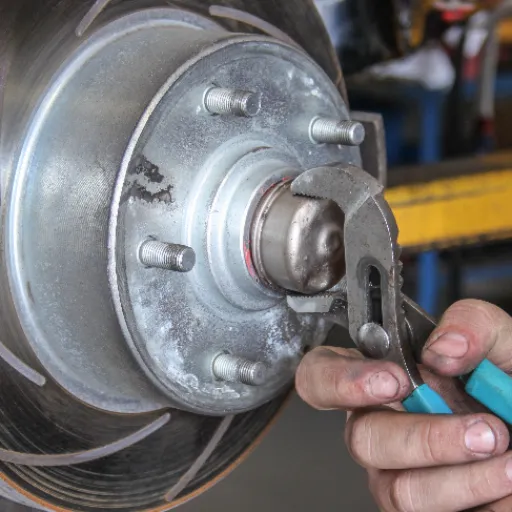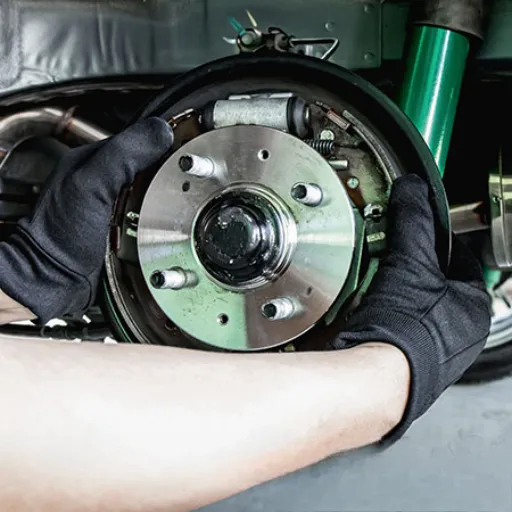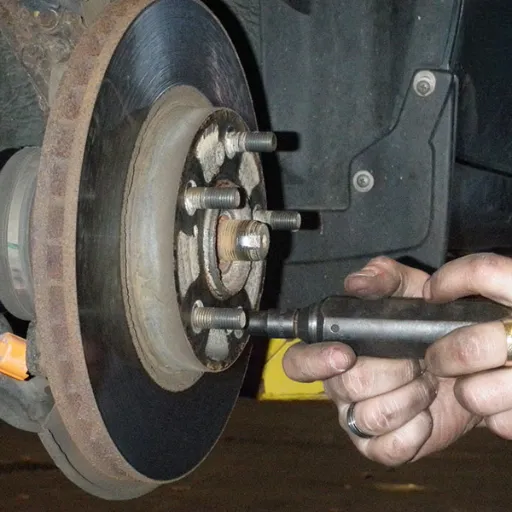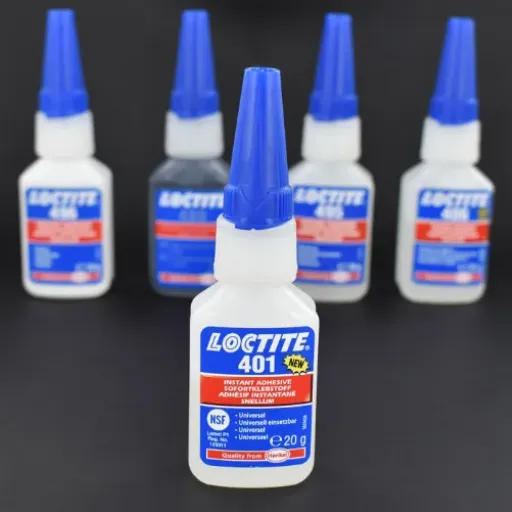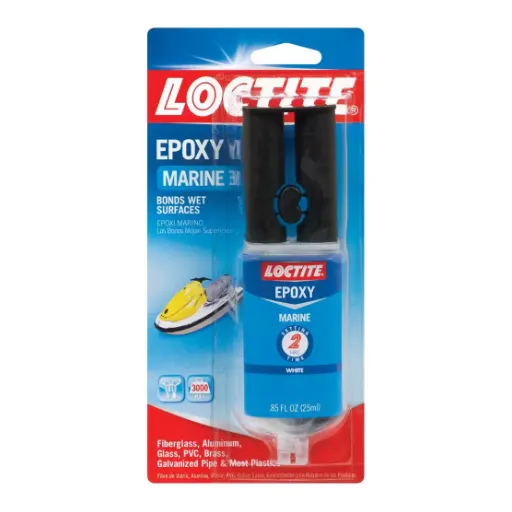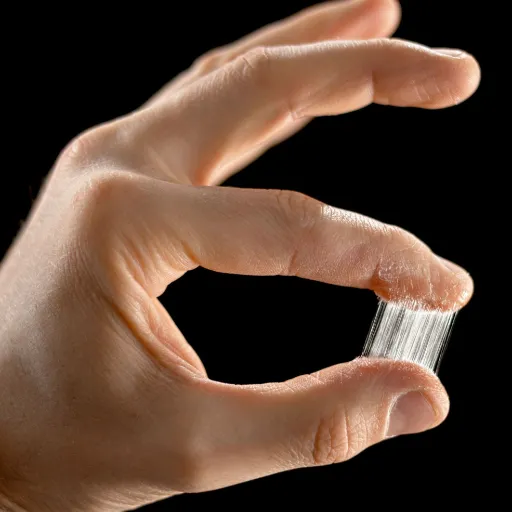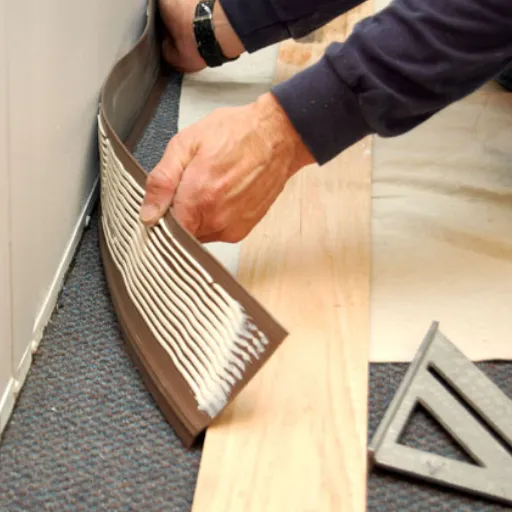Achieving effective joints and strong bonds when dealing with 3D-printed PLA parts can be difficult, especially while trying to join several pieces together or during repairs of misprinted parts. PLA is a thermoplastic and comes with some adhesive-specific challenges, including how precisely two surfaces need to be prepared prior to application. In the hope to assist novice makers, this article is going to focus on most effective approaches to binding PLA pieces, their characteristic properties, and the methods to achieve reliable outcomes. This guide will provide craftsmen with most effective approaches to binding PLA, which will make your projects stay together and will endure multi-directional forces.
What is the Best Way to Glue PLA Parts Together?
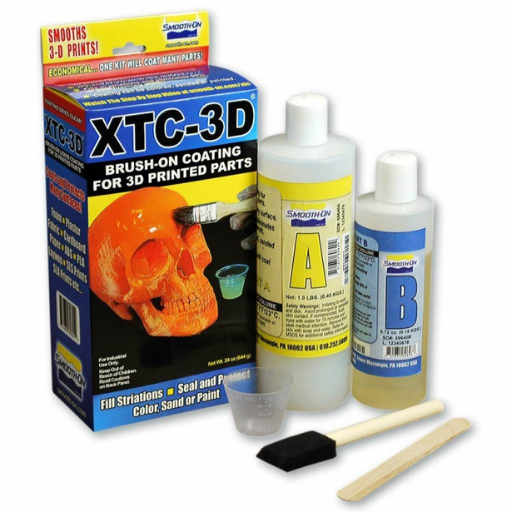
The ideal approach to sticking PLA components is using cyanoacrylate glue, aka super glue. This adhesive works best with PLA as it bonds super quick and is strong. For best results, clean both surfaces, getting rid of dust or grease. Apply cyanoacrylate glue on one surface and evenly with small amounts, press and hold for a few seconds. For some larger or more structural components, epoxy glue can also be used, but it does dry slower than super glue It is important to follow all instructions provided by the manufacturer to ensure safety and effectiveness.
Understanding Different Types of Glue for PLA
- Cyanoacrylate Glue
Super glue or cyanoacrylate glue works well for PLA because it is fast acting and gives a strong bond. With super glue, you do not need to wait long as it bonds rapidly. This works great for fast repairs or small projects. On the other hand, some of its brittleness makes it unsuitable for parts that will bear stress or need to flex a lot. Some formulations change the glue with additives to make the glue more durable to some extent.
- Epoxy Adhesive
Epoxy adhesives work well for joining PLA, especially in more demanding scenarios. They are useful in an array of industries ranging from construction to outdoor structures. Like all epoxy adhesives, they come with a resin and a hardener which need to mixed two parts before being applied. Cured epoxy adhesives PLA joints are exceptionally strong and endure heat as well as chemicals, making these joints best suited for structural components or applications outdoors. On the downside, the curing epoxy takes several hours and extensive surface preparation is critical to reach best bond strength.
- Acrylic-Based Adhesives
Acrylic adhesives are known to provide a middle ground in speed and strength. Also, acrylic adhesives set faster than PLA adhesives while retaining bond strength and flexibility. They are more effective on rough or uneven surfaces due to their capability to fill small gaps which enhances bond strength. In addition, some acrylics have been specifically developed to resist moisture and UV light, making them effective for PLA alberts exposed to varied environments.
- Urethane Adhesives
Urethane adhesives are particularly uncommon for PLA, but they do have some specific benefits. For example, they are particularly good at providing flexibility and impact resistance which is important for parts that could experience cyclic loading. While these adhesives are often impacted negatively by very low or very high temperatures, they can protect against wide temperature ranges. They may have less adhesion than cyanoacrylate or epoxy adhesive on PLA surfaces however. Bonding may require pre-treatment or surface roughening to increase adhesion.
- Considerations for Adhesion Optimization
Issues such as component size, expected load, operating conditions, and cure times all affect which adhesive is best. Surface treatment, for example sanding or priming, can boost adhesion regardless of adhesive classism. Adhering to these considerations will promote a lasting durable bond to the 3D printed parts.
Choosing the Right Adhesive for Your PLA Project
Along with all other attributes that can be looked at when picking an adhesive for PLA, its chemical compatibility is one which really stands out. PLA’s surface is smooth and non-porous, which is why Cyanoacrylate adhesives or superglue is often favored. Furthermore, two-part epoxies are very mechanically strong which allow them to be used where high strength or fluctuating loads are present.
Using solvents like dichloromethane can create strong connections thermoplastically by soaking and melding PLA components. This process is very precise and protective measures need to be taken against harmful fumes. Polyurethane adhesives could also be useful for larger parts and more rigid needs due to their flexibility and ability to withstand shock.
Another critical consideration is assessing the conditions of the environment where the bond will be used. Circumference enhancements like temperature shifts, moisture, and even UV light can take a toll on some adhesives. Testing within the boundaries of the actual working environment is fundamental to guarantee that the chosen adhesive will meet expectations.
Tips for Applying Glue to PLA Surfaces
- Surface Preparation
The PLA surface must be stripped off contaminants like dust and oils that cover residues from the 3D printing process; carefully washing them with a lint-free cloth dampened with isopropyl alcohol (at least 70%) qualifies as a thorough cleaning. For strong adhesion of bond, the surface-plasty (220 grit) is to be roughed up so as to give it a rougher surface for the glue to anchor onto.
- Selection of the Right Adhesive
Different adhesives work with different applications on PLA. For non-flexible parts, super glue serves strong bonds. Structural bonds, on the other hand, are served by epoxy adhesives that yield high strength and durability. Other bonds requiring flexibility can be served by polyurethane glue due to its pliable bond.
- Temperature Control During Application
Bonding PLA parts requires an appropriate temperature. The process is most effective when done within a stable room temperature range (23℃-25℃). Like with most adhesive applications, avoid applying extreme cold/hot conditions during curing as it can compromise the bonding solution and weaken the amalgamation.
- Clamping for Uniform Pressure
After applying the adhesive, wait a few moments before putting the pressure clamps in place. Adhere to using proper PLA clamps and moderate pressure as too much force can cause deformation to the bonded assembly.
How to Prepare PLA Parts for Gluing?
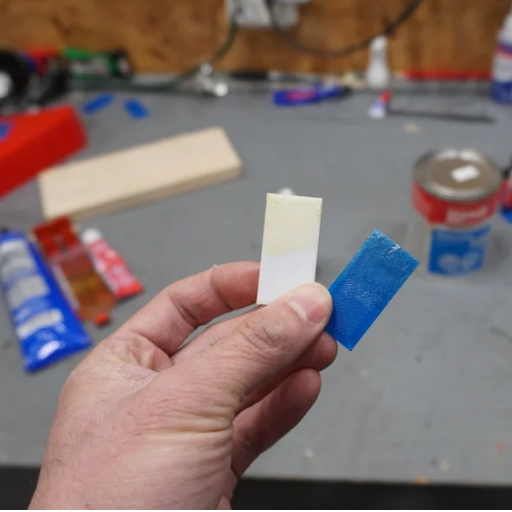
- Clean the Surface
As with any cleaning procedure, PLA components that require cleaning also need to be free from all grime, grease, or detergents. Cleaning with isopropyl alcohol and a non-absorbent towel will ensure the surfaces are pristine.
- Smooth the Edges
Strong adhesion for bonding requires the surfaces to undergo roughening of from sanding.
- Test the Fit
Attaching components without synergy with glues also known as dry fitting is critical especially for align ment verification of the assembly. All components must snugly fit without spaces.
- Eliminate Static
PLA has problems accumulating static charge, as such using anti-static cloth will limit dust attraction.
- Ensure the Surface is Dry
Make sure all surfaces are dry before applying adhesives. Water can disrupt the bonding procedure.
Cleaning and Sanding PLA Surfaces
When finishing or adhering to surfaces, PLA requires cleaning and sanding which must be performed stepwise for reliable outcomes. During both of these steps, handling a thermoplastic must be done with care to prevent distortion.
- Remove Residual Material
The first step is cleaning the surface of the remnants of any supporting structures. You can carefully remove excess filament using precision tools such as small utility knives or flush cutters while maintaining the model’s integral shape.
- Degrease the Surface
Oils caused by handling can stick to the surface of PLA, interfering with the adhesion of glues or paints. Use cleanup isopropyl alcohol or IPA on a fresh microfiber cloth to thoroughly cleanse the area. It is also useful in removing fine dust particles that could ruin the finish.
- Select Appropriate Sandpaper
Begin the sanding process with medium-grade sandpaper like 120 to 220 grit. This will blend any noticeable rough features. Polish with higher grits (400 to 800). Maintain consistent pressure across the area to avoid creating uneven surfaces.
- Monitor Heat Generation
Excessive heat is generated by friction during the sanding process. This softens and warps PLA. To avoid this, take short breaks while sanding, and sand in short bursts. Another method is wet sanding, where water is used as lubricant. This method not only cools heat but also provides a smoother finish.
- Inspect the Surface
After sanding the surface, check the area for lack of scratches and dirt. Fill in any scratches and sand to the ideal level of smoothness if necessary. Properly prepared surfaces always ensure better results during further processing during finishing stages.
With the proper techniques described above, steps can be taken towards cleansing and sanding surfaces of PLA enhancing finishing, parts adhesion, or their intended functions.
Using Acetone for Best Results with PLA
While acetone treatment enhances the surface quality for some blends of PLA, it remains ineffective on pure PLA due to its lack of chemical structure. It is important for the specific PLA material in use to be tested for acetone compatibility. Many commercially available PLA blends use modifiers that enable the additive smoothing post-processing blending. This makes post-processing far simpler.
During acetone finishing, apply acetone more carefully than infrequently. Fume heating acetone is the most widely proven effective technique for smoothing PLA. For this procedure, a sealed chamber is required where the 3D printed PLA part would gradually be filled with controlled acetone vapor. This process would polish the part, creating a smooth outer layer finish while the inner structure retains solidity.
Always wear Esk 3-grade protective gloves and ensure proper room ventilation when smoothing features of PLA with acetone. Prolonged exposure to acetone vapor will weaken it structurally. Provided that the PLA materials used are carefully selected accompanied with the right techniques, the end results can be industrial-grade polished surfaces.
What are the Best Adhesives for PLA 3D Printed Parts?
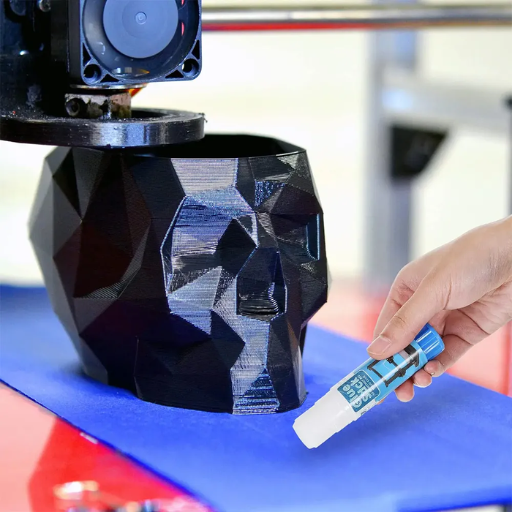
Super glue (cyanoacrylate glue), epoxy, and certain adhesives for plastic are the best glues for joining PLA 3D printed parts together. Super glue is preferred a lot because it is easy to use and bonds fast. Bonding epoxies work best on applications that need a strong and durable bond especially on parts that are subjected to heavy loads. Also, plastic welds made by solvent-based adhesives designed for plastics can actually bond chemically by melting part of the PLA surface, which makes the bond very strong and permanent. For all types of plastic weld adhesives, the surfaces to be joined must be clean and dry to achieve the best results.
Comparing Super Glue and Epoxy for PLA
|
Parameter |
Super Glue |
Epoxy Adhesive |
|---|---|---|
|
Bonding Strength |
Moderate |
High |
|
Setting Time |
Fast (seconds to minutes) |
Slow (hours to cure fully) |
|
Durability |
Lower |
Very durable |
|
Heat Resistance |
Moderate |
High |
|
Water Resistance |
Low to moderate |
High |
|
Ease of Application |
Very easy |
Requires mixing |
|
Surface Preparation |
Minimal (clean surfaces) |
Essential for strong bond |
|
Flexibility After Bonding |
Minimal flexibility |
Retains slight flexibility if needed |
|
Suitable for Load-Bearing |
Not ideal |
Excellent |
|
Chemical Reaction |
Minimal (physical bond) |
Creates chemical bond with PLA |
|
Cleanup Requirements |
Low |
Can be messy |
|
Shelf Life |
Long |
Varies, often shorter than super glue |
The Benefits of Using Weld-On 16 for PLA
When dealing with PLA (polylactic acid), Weld-On 16 offers a dependable and effective adhesive that is ideal for some specific applications. Below, I outline the advantages of using Weld-On 16 with PLA:
- Strong Chemical Bonding
Weld-On 16 forms strong chemical bonds with PLA materials because it is solvent-based, which means it partially dissolves the surface of the PLA to “weld” the connection. Therefore, the resulting bonds exceed those obtained by physical methods of adhesion greatly.
- Ideal for Load-Bearing Applications
As a result of high bonding strength, Weld-On 16 also suits projects demanding high mechanical strength and also does well in maintaining the integrity of load-bearing structures.
- Slight Flexibility
The adhesive keeps a small degree of flexibility after curing which permits it to sustain minor stress or movement in the assembled parts without breaking. This is particularly beneficial for applications subject to vibrations or small physical movement.
- Quick Setting Time
With great bond strength, Weld-On 16 has a relatively short curing time which decreases the waiting period after which assembled parts can be put into use.
- Durability in Varied Conditions
Bonds made with Weld-On 16 are exposed to a wide temperature range and high humidity with sustained durability, therefore protecting your bond from these factors increases the lifetime and reliability of the bond.
Taking advantage of these factors, Weld-On 16 is an efficient and dependable adhesive for professionals or PLA hobbyists for numerous applications.
When to Use Gorilla Glue or Wood Glue
Gorilla glue and wood glue are two clear gules that one comes across as they do woodworking and other joining works. The right choice of glue is determined by the materials to be joined, glueing conditions, project requirements, as well as the environmental conditions.
Gorilla glue is an example of polyurethane-based adhesives. This particular glue is unmatched when it comes to strength. It adheres to wood, metal, stone, plastics, ceramics, foam, and some other stiff materials. This product is highly recommended with regards to moist environments because it forms a waterproof bond. This also explains why this glue is the best for outdoor works due to its exposure to high moisture, heat, cold, temperature and UV rays. While waterproof, gorilla glue also has the downside of expanding as it cures, which may require clamping and careful application of the glue beyond the bond area. The expanding characteristic goes hand in hand with filling tiny gaps in between surfaces of materials.
Adhesives for wood , especially based on PVA or polyvinyl acetate, are made from sland materials that need joining for strong adhesion. They are most useful in carpentry, furniture manufacturing, and other woodworking activities that require nontoxic glues that are easy to clean in the end. Unlike wood, PVA does not expand and cure as in the case of gorilla glue, which makes wood glue cure faster and more precisely to make cleaner bonds. Some PVA glues, like Titebond III, are specially formulated to be resistant to water and, in some cases, completely waterproof to make them outdoor-friendly. Still, PVA works better when the temperature is controlled for indoor use and moderate humidity.
With treating wood or porous materials PVA is most competitively priced and simply cheaper to apply. Mixed material applications best suit gorilla glue and environments with tough conditional wear and tearing because of its strength. Adhesives and project needs have to be balanced to make everything work flawlessly , period.
Can You Use Solvents to Glue PLA Together?
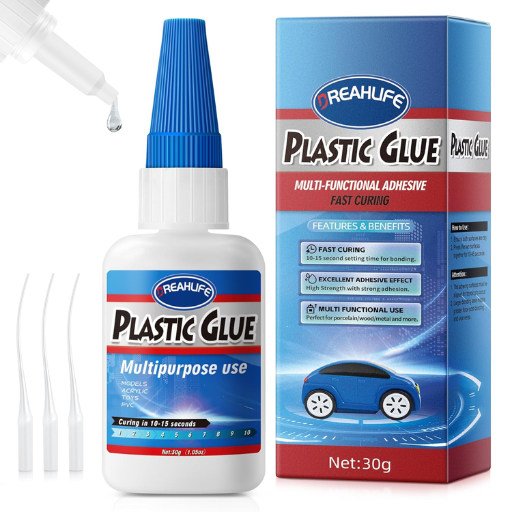
Indeed some solvents can be used to glue polylactic acid (PLA) together, but their effectiveness is limited. Unlike many plastics, traditional solvent welding methods for PLA have dismal failure. An example is acetone. It is very inconsistent and only works with specific formulations of PLA. However, glue works great with PLA and is much more reliable. With super glue, the bond is strong and requires little prep work which makes applying the adhesive much easier. The bond is also strong enough so long term durability is achieved. Long term durability can be achieved by cleaning and sanding the surfaces to increase the bond area.
Understanding the Effects of Solvents on PLA
Polylactic Acid (PLA) has friendly solutions and is regarded as biodegradable, but it also has challenges when dealing with aggressive solvents due to its chemical properties. It has been discovered that PLA has high resistance to the majority of hydrocarbons, alcohols, and some oils. This makes PLA difficult to work with in cases where solvent welding is necessary. Nonetheless, suites of solvents like dichloromethane (DCM) or chloroform have been recognized to PLA due to ability ov these solvents to disrupt the polymer structure of PLA. Though, these substances are classified as hazardous waste due to their health and environmental risks that require proper ventilation and PPE when handling or using them.
Recent studies focus on bio-solvents, green alternatives like ethyl acetate, and their applications in 3D printing. While ethyl acetate is safer than DCM, it can (under specific conditions) cause temporary smoothing or adhesion effects. For certain applications, knowing how solvents interact is important since some detrimental interactions will weaken PLA or cause deformities of unpredictable nature.
Tips for Safe Use of Solvents with PLA Parts
- Ensure Proper Ventilation
Make sure to work in areas with good ventilation when using solvents to reduce inhale of fumes. Bad ventilation can cause a build-up of volatile organic compounds (VOCs) which can damage the respiration system. Whenever it is safe, try working in places such as fume hood or out in the open to reduce risk.
- Wear Appropriate Personal Protective Equipment (PPE)
Make sure to use safety lab goggles and coats along with gloves for every solvent interaction. Isopropyl alcohol (IPA) and ethyl acetate are both common solvents, and nitrile gloves are designed to resist both. Stay away from latex gloves as they can get damaged with exposure to some solvents.
- Test on Scrap Materials
Perform compatibility tests on scrap pieces prior to using PLA parts. Learn that Ethyl acetate can soft PLA severely, while under certain conditions, DCM can lead to swift and erratic breakdown.
- Control Solvent Application
Use solvents only where necessary and in precise amounts, for example, with a cotton swab or a small brush. Excessive application of solvents can lead to degradation of PLA and loss of integrity. For the smoothing process, thin layers applied incrementally give better control.
- Monitor Temperature
Temperature can have an effect on solvent effectiveness. Do not work in hot environments where solvents can vaporize too quickly because this increases volatility and reduces control over how the solvent is applied.
Following these detailed safety recommendations permits the safe shrinking and bonding of PLA parts with minimal risks to the operator, surroundings, and created structures.
How to Ensure Strong Joints When Gluing PLA?
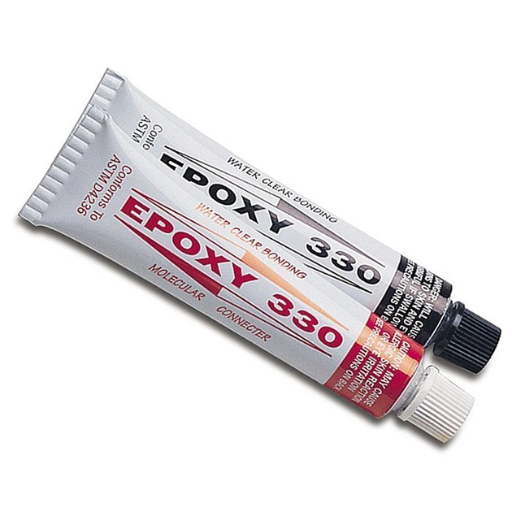
- Choose the Appropriate Adhesive
Use strong plastic adhesives such as cyanoacrylate glue (super glue) or PLA-specific adhesives. These are useful for PLA bonds.
- Prepare the Surfaces
To increase the strength of adhesive applied, enhanced bonding may be achieved through light sanding in addition to dust, grease, or debris removal.
- Apply the Adhesive Evenly
To achieve effective structured joints, apply smooth glue not exceeding a thin layer on a single surface as excess glue can lead to a joint being weakened or complications that disrupt balance.
- Align and Press Firmly
Immediately press the pieces together and maintain calm, firm pressure whilst smoothly aligning the pieces. To stabilize the structure during the bonding period, use clamps or weights.
- Allow Adequate Curing Time
Follow the guidelines prescribed by the glue manufacturer regarding curing time. For maximum strength, do not move the joint before the appropriate time or allow any premature stress, focusing on keeping the joint immovable.
The steps above will enable you to obtain durable and accurate joints in PLA parts and components.
Techniques for Creating Strong Glue Joints
In order to produce effective and lasting glue joints there are a number of interrelated factors that need close attention. Material compatibility, surface preparation, adhesive application, and environmental conditions are all pivotal concerns:
- Material Compatibility
It is equally important to choose an adhesive that will be compatible with the materials. For instance, CA glue works well with PLA, but for stronger flexible bonds, other epoxies or specialized plastic adhesives would be best. Knowing the material properties best guarantees good adhesion.
- Surface Preparation
To achieve an optimal joint strength, the surface must be properly clean and dry with no oils, dust, or residues. Light sanding increases surface roughness which helps with adhesion as it provides more bonding area and improves bonds between surfaces.
- Adhesive Application Technique
The even and sufficient distribution of adhesive is a critical requirement. Letting too little adhesive result in insufficient application leads to weak joints while too much adherent leads to uneven curing. Use precision applicators to small intricate parts of controlled and consistent application.
- Environmental Conditions During Curing
Hot and humid conditions, melee the environment and bond strength, can directly control curing times. For example, high temperatures might help with curing on some adhesives but lowers effectiveness on others. Always follow instructions and recommendations on provided curing environments.
- Joint Design
Strength is importance in defining geometry of joints. Overlap or interlocking joints tend to share external stress evenly reducing chances of buckling. Adding supportive structures made of pin and screws or bolts helps alongside the glue in highly stressed scenarios.
Glue joints can be made reliable by addressing the above provided factors regardless of application type.
Using Activators with Super Glue for Better Bonding
Chemicals activated for use with superglue, or cyanoacrylate adhesives, serve as activators that not only boost its curing efficiency, but also optimally increase uniting strength. When properly applied, activators cause very swift polymerization of the adhesive, which makes the bond much stronger in tough conditions. This method works exceptionally well with non-porous materials such as metals, glasses, or polished plastics which tend to cure very slowly leading to inferior bond strength.
Employing activators is especially important for reducing super glue’s gap-filling shortcomings. By alleviating slower curing processes, super glue’s potential weak spots caused by uneven contact surfaces, especially in industrial or mechanical applications, are mitigated. Modern activator formulations aim to reduce the long-term degradation of the bond, facilitating quick repairs while ensuring greater durability when stress is applied. Absolute compatibility between the adhesive and the activator used is critical to optimal performance, as manufacturer guidelines for use must be followed.
How to Clamp PLA Parts Together While the Glue Sets
Appropriate clasps for PLA (polylactic acid) components are imperative to attaining a strong and reliable bond during the adhesive curing phase. While excessive screw pressure can damage parts, the geometry of the PLA components and the adhesive used must be taken into consideration. For optimized screw pressure, silicone pads or foam inserts serve best as they are soft, non-abrasive, and can exert uniform pressure to avoid surface deformation.
With cyanoacrylate and epoxy adhesives, a holding method that combines precision with rigidity is needed for alignment and effective adhesive curing. Gap-filling adhesives set well only when fully aligned. Bar clamps and spring clamps provide adjustable and controlled pressure along with precise control over the amount of pressure applied. For lightweight and delicate parts, small binder clips and rubber bands provide sufficient holding force without the danger of over-tightening.
Other factors can influence the clamping process as well. Changes to environmental temperature and humidity can affect curing time, so controls should be made in a stable environment. Also, the clamping system should not be disturbed for the entire time specified by the adhesive manufacturer in order to achieve the best strength.
Reference Sources
-
Polylactide Adhesives Development: This study explored creating PLA-based adhesives using various additives like pigments, essential oils, and corn flour. Chloroform was identified as the most effective solvent for dissolving PLA.
-
Multi-Material PLA Bonding: Investigated the adhesion between different colored PLA materials using Fused Deposition Modeling (FDM). Highlighted the importance of interfacial bonding and the impact of surface orientation on tensile strength. Found that horizontal-vertical adhesion and contour lines significantly affect bonding performance.
-
Optimizing PLA Interlayer Bonding: Focused on enhancing mechanical properties of PLA parts through optimized 3D printing parameters. Identified optimal settings: 0.1 mm layer thickness, 60 mm/s print speed, and 200°C temperature.
Frequently Asked Questions (FAQs)
Q: What is the best glue for PLA when gluing 3D-printed parts?
A: The best glue for PLA is often super glue gel or epoxy resin, as they provide strong bonds for 3D parts together and are easy to apply.
Q: How do you apply the glue for best results on PLA?
A: To apply the glue, first pre-fit your parts to ensure a proper fit, then use a small amount of glue on one surface and press the parts together and hold until it starts to harden.
Q: Can I use super glue gel for gluing plastics like PLA?
A: Yes, super glue gel is effective for gluing plastics, including PLA, due to its strong adhesive properties and gel control, which allows for precise application.
Q: Is Loctite a good option for joining or repairing PLA parts?
A: Loctite products, especially those labeled for use with plastics, are a good option for repairing a broken item or joining PLA parts together.
Q: What should I do to prepare my work area before gluing PLA?
A: Prepare your work area by ensuring it is well ventilated, and gather your materials, including latex or nitrile gloves and the glue you plan to use.
Q: Can I use glue sticks for PLA parts, or are they not effective?
A: Glue sticks are generally not recommended for PLA parts as they do not provide a strong bond compared to super glue or epoxy resin.
Q: What safety measures should I take when using adhesives on PLA?
A: When using adhesives like super glue or epoxy resin, it is important to wear safety gear such as gloves and work in a well-ventilated area to avoid inhaling fumes.
Q: How long does it take for the glue to harden on PLA?
A: The time it takes for glue to harden on PLA can vary; however, most super glues set within minutes, while epoxy resin may take several hours to fully cure.
Q: Are there common adhesives I should avoid when gluing PLA?
A: It is best to avoid common adhesives like PVA glue or hot glue, as they may not create a strong enough bond for PLA and can lead to weaker joints.
Q: Can I repair my PLA parts if they are damaged using glue?
A: Yes, you can repair a broken item made from PLA using strong adhesives like super glue or epoxy resin, ensuring that both surfaces are clean before applying the glue.







